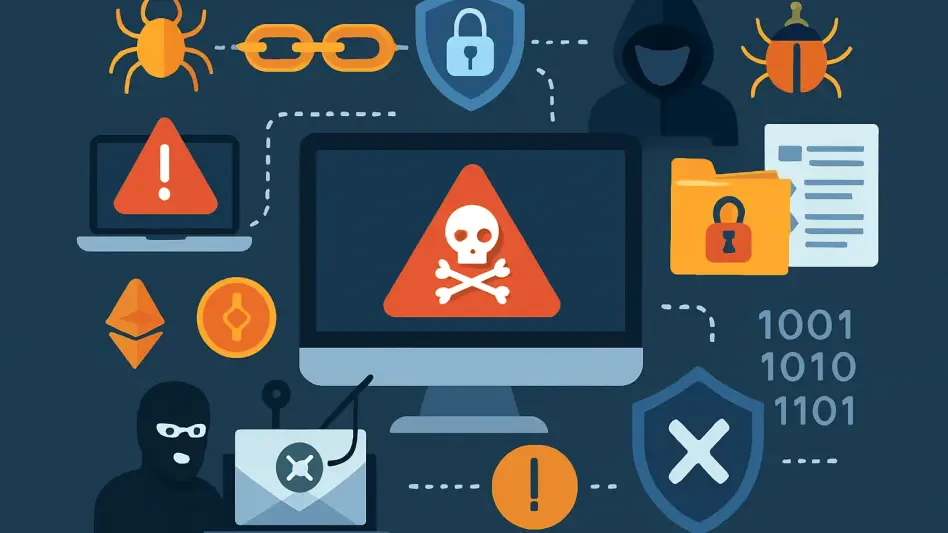The rapidly evolving world of Web3, with its promise of decentralization and transparency, faces a critical security challenge. In the first half of 2025 alone, Web3 security breaches resulted in an astonishing $3.1 billion in losses. Despite blockchain’s inherent security design, the intricate web of connected services around it reveals glaring vulnerabilities. The primary culprit behind most of these breaches remains weak access control mechanisms, contributing to nearly 59% of incidents. Access control failures open doors to malicious actors, leading to unauthorized exploits of digital resources.
Defining Weaknesses in Web3 Infrastructure
Access Control Failures: A Top Concern
Web3’s security reputation has taken a significant hit due to the increasing number of breaches linked to insufficient access control measures. These control mechanisms aim to prevent unauthorized access to data and resources. However, the complex and interconnected nature of services surrounding blockchain technology often presents exploitable loopholes. One infamous case, the Bybit hack, showcased the susceptibility of certain multisig wallet configurations. Despite multisig’s intended security purpose of requiring multiple signatures for transaction authorization, poor implementation in this instance allowed a single malicious contract to seize control.
In another notorious incident within zkSync, a deficient multisig setup became a point of failure when a single compromised key permitted unauthorized use of an airdrop contract. Meanwhile, UPCX faced a complete system takeover due to exploited roles and malicious contract upgrades. These cases illustrate a recurring pattern: the very configurations meant to enhance security inadvertently pose significant risks if misconfigured or implemented inadequately. The ongoing challenge lies in ensuring these access controls are not only robust but also correctly configured to avoid potential breaches.
Beyond Traditional Vulnerabilities
While access control vulnerabilities remain a focal point, logic bugs within DeFi and smart contracts compound the issues faced by Web3. Logic bugs relate to programming errors that inadvertently allow exploitative behavior. Recent quarters showed a temporary decline in losses attributable to logic flaws. However, Q2 2025 witnessed a financial surge to $263 million, marking the worst quarter for DeFi since early 2023. The Cetus attack is a prime example, where overflow exploits in liquidity calculations resulted in substantial losses. Similarly, the Cork Protocol faced challenges as flaws allowed unintended operations within its structure.
These incidents highlight the need for a profound transformation in auditing practices and secure coding methodologies. Though traditional auditing still holds importance, it must evolve to meet modern threats posed to decentralized finance protocols. Improved auditing involves more than identifying errors; it requires understanding their potential implications and installing protective measures to counter these vulnerabilities before they result in financial damage.
The Rise of Non-Technical and AI-Driven Threats
Exploring Social Engineering Tactics
A disturbing trend in 2025 is the marked increase in non-technical attacks, particularly through social engineering. By exploiting human psychology rather than technical vulnerabilities, attackers have become adept at deceiving users. This year, an elder investor was scammed out of $330 million in Bitcoin through an intricate scheme involving pseudo-tech support and psychological manipulation. The incident stressed how easily users’ trust could be exploited given the attackers’ sophisticated approach.
Coinbase experienced a similar breach, where phishers utilized compromised user data to conduct fraud through pretend support calls. More than $100 million was swiped as a result. These cases serve as stark reminders of the importance of user education in understanding potential threats. Institutions and users must adopt proactive measures and leverage advanced monitoring solutions to detect suspicious activities and mitigate risks stemming from such deceptive tactics.
AI: The Emerging Threat Vector
AI-driven attacks have surged by a staggering 1025% compared to 2023, fundamentally altering the threat landscape. Initially, vulnerabilities lay within AI models themselves, yet recent incidents reveal a shift towards exploiting integration infrastructures. Infiltrations exploited weaknesses from Langflow’s code-validation API to BentoML’s deserialization processes. This shift indicated a growing threat trend within AI environments and highlighted adversarial emulation tools’ potential use.
These emergent threats show a dire need for cybersecurity defenses tailored to AI and LLM (Large Language Model) applications. As newer technologies emerge, understanding their security implications becomes vital. Prioritizing infrastructure protection and inventory detection tools specific to AI can help prevent exploitation. Effective adaptation will necessitate enhancing current frameworks to confront these complexities.
Strategic Recommendations and Broader Implications
Expert Strategies for Robust Security
To counteract Web3 vulnerabilities, implementing robust access control standards is paramount. Experts recommend incorporating a dual-framework strategy aligning on-chain and off-chain security measures. Integrating CCSS (Cryptocurrency Security Standard) with ISO/IEC 27001 strengthens access control resilience. Moreover, adopting OWASP GenAI Red Teaming and ISO/IEC 42001 reinforces security against AI threats, offering a comprehensive approach to safeguarding AI-integrated systems.
For securing agentic LLM infrastructures, deploying Model Context Protocol (MCP) plays a critical role. These recommendations collectively strengthen cybersecurity responses to varied threats across Web3. By adopting industry-leading practices, Web3 entities have greater capacity to address fundamental weaknesses, potentially preventing financial losses and sustaining digital innovation.
Innovating Security Practices
Robust security measures must evolve beyond traditional paradigms. TVL (Total Value Locked) monitors and Safe Multisig monitors emerge as pivotal for real-time data analysis coupled with automated response mechanisms. These tools, when leveraged effectively, can prevent losses or significantly reduce their impacts, fortifying Web3’s resilience against evolving threats.
Adding another layer of security, focusing on proactive strategies like anomaly detection and adaptive defenses becomes vital. Such strategies involve building dynamic, learning-based models capable of detecting unknown threats or unusual behaviors. Emphasizing collective intelligence and threat intelligence sharing among Web3 communities can also produce richer defense insights and foster a collaborative security landscape.
Navigating Future Security Landscapes
The intricate Web3 landscape necessitates constant adaptation to security challenges posed by new technologies. As AI drives new threat vectors and access control problems compound, cybersecurity strategies must evolve accordingly. Prioritizing a unified framework encompassing blockchain, ancillary services, and AI environments ensures comprehensive protection.
Emerging security trends signify a decisive shift from isolated to holistic defenses, considering both technological and human elements. Organizations must realign and redefine protective measures while maintaining user-centric approaches. Educating users, promoting vigilant behavior, and implementing robust systems aid in mitigating vulnerabilities.
Conclusion: Strengthening Web3’s Future
The dynamic Web3 landscape, hailed for its decentralization and transparency, is grappling with a significant security hurdle. In just the first six months of 2025, Web3 security breaches resulted in staggering losses of $3.1 billion. Despite the inherent security features of blockchain technology designed to protect transactions and data, the complex network of interconnected services around it exposes severe vulnerabilities that can be exploited. At the heart of these vulnerabilities is weak access control, responsible for nearly 59% of all security incidents. These access control weaknesses create opportunities for malicious actors to breach and exploit systems, gaining unauthorized access to digital assets and resources. This ongoing challenge highlights the urgent need for robust security measures in the Web3 domain. As Web3 grows and evolves, strengthening access controls becomes crucial to safeguard against such exploits, ensuring the technology lives up to its promise of safety and trust.








